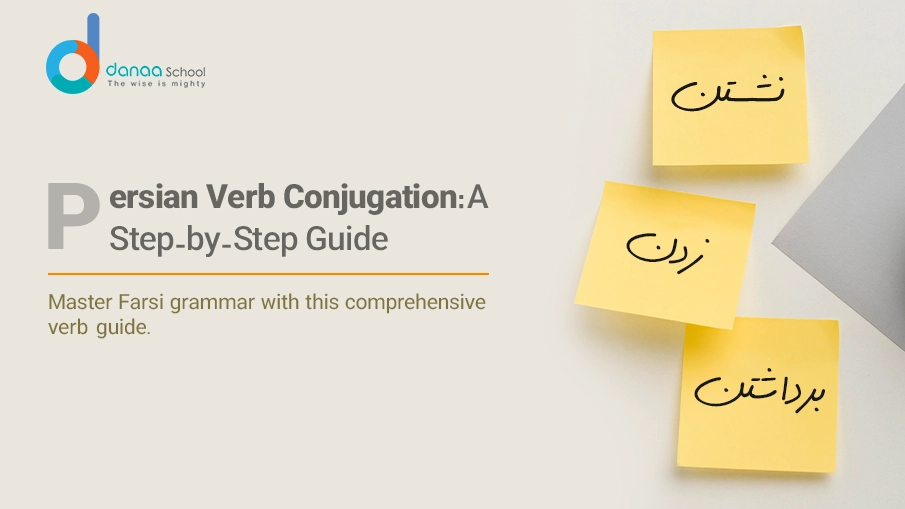Persian, also known as Farsi, is a beautiful, rich language with a straightforward yet fascinating verb conjugation system. Whether you are a language enthusiast or learning Farsi for practical reasons, mastering Persian verb conjugation is essential.
This guide will help you understand the structure of Persian verbs, their tenses, and how they adapt to different pronouns, making it easier for you to communicate fluently.
Introduction to Persian Verb Conjugation
In Persian, verbs are the backbone of sentences, just like in any other language. They provide crucial information about time, mood, and action. Conjugating verbs in Persian follows a logical system with regular patterns that make learning manageable. While irregular verbs exist, they are far fewer compared to English or other languages.
One key feature of Persian is its simplicity in verb forms. Unlike English, which has numerous auxiliary verbs, Persian relies on prefixes and suffixes to modify verbs.
Understanding Essential Persian Verbs
Persian verbs consist of two parts:
-
- The root (stem) – Contains the core meaning of the verb.
-
- The endings (conjugations) – Indicate tense, mood, and person.
For instance, in the verb raftan (to go):
-
- The root is raft (meaning “go”).
-
- The suffix -an indicates that it is the infinitive form.
Types of Persian Verbs
Persian verbs can be divided into two categories:
-
- Regular Verbs – Follow predictable conjugation patterns.
-
- Irregular Verbs – Deviate from standard rules but are still easy to memorize due to their frequency of use.
Examples:
-
- Regular verb: kardan (to do).
-
- Irregular verb: budan (to be).
Key Tenses in Persian Verb Conjugation
1. Present Simple Tense
The present tense in Persian is created by combining the present stem with personal endings. To form the present stem, remove the infinitive ending “-an” and attach the appropriate suffix.
Example: Kardan (to do)
| Pronoun | Verb Form | Translation |
| Man | mikonam | I do |
| To | mikoni | You do |
| U | mikonad | He/She does |
| Ma | mikonim | We do |
| Shoma | mikonid | You do (pl) |
| Anha | mikonand | They do |
The prefix mi- marks the present tense.
2. Past Simple Tense
For the past tense, use the past stem (removing “-an” from the infinitive) and attach personal endings.
Example: Kardan (to do)
| Pronoun | Verb Form | Translation |
| Man | kardam | I did |
| To | kardi | You did |
| U | kard | He/She did |
| Ma | kardim | We did |
| Shoma | kardid | You did (pl) |
| Anha | kardand | They did |
3. Future Tense
The future tense is formed by combining the conjugated form of the verb khah (to want) with the infinitive.
Example: Kardan (to do)
| Pronoun | Verb Form | Translation |
| Man | khaham kard | I will do |
| To | khahi kard | You will do |
| U | khahad kard | He/She will do |
| Ma | khahim kard | We will do |
| Shoma | khahid kard | You will do (pl) |
| Anha | khahand kard | They will do |
Advanced Tenses in Persian
Present Continuous Tense
To express ongoing actions, Persian uses the prefix mi- with the present stem. The context determines whether the action is habitual or ongoing.
Example: Midanam ke miayi.
Translation: “I know you are coming.”
Past Continuous Tense
The past continuous is formed with the prefix mi- and the past stem.
Example: Mikardam.
Translation: “I was doing.”
Perfect Tenses
Perfect tenses express actions completed in the past but with relevance to the present or another time.
-
- Present Perfect: Combine the past participle with the present tense of budan (to be).
Example: Kardeh am (I have done).
- Present Perfect: Combine the past participle with the present tense of budan (to be).
-
- Past Perfect: Replace the present tense of budan with the past tense.
Example: Kardeh budam (I had done).
- Past Perfect: Replace the present tense of budan with the past tense.
Find Your Ideal Teacher
At Danaa School, you can choose your Farsi tutor from a selection of qualified and experienced teachers. Begin an exceptional journey into the world of Persian language!
Book Your Trial Lesson
Modal Verbs in Persian
Modal verbs in Persian, like in English, indicate ability, necessity, or permission. Common modal verbs include:
- Tavanestan (to be able to): Man mitavanam (I can).
- Bayad (must): Shoma bayad beravid (You must go).
Imperative Form in Persian
The imperative form is used for commands or requests. Add the prefix be- or bo- to the present stem.
Example: Bekon!
Translation: “Do it!”
Negative Forms
To negate verbs in Persian, add the prefix na- before the verb.
Example: Nemikonam.
Translation: “I do not.”
Conjugation in Persian Grammar
Here are a few common Persian verbs:
- Budan (to be)
| Pronoun | Present Tense | Past Tense | Translation | |———|—————|————|————–| | Man | hastam | budam | I am/was |
- Raftan (to go)
| Pronoun | Present Tense | Past Tense | Translation | |———|—————-|————|————–| | Man | miravam | raftam | I go/went |
Persian Verb Conjugation Chart
| Tense | Regular Verb Example (Kardan) | Irregular Verb Example (Budan) |
| Present Simple | Mikonam, mikoni | Hastam, hasti |
| Past Simple | Kardam, kardi | Budam, budi |
| Future | Khaham kard | Khaham bud |
Tips for Mastering Persian Conjugation
- Practice Daily: Consistency is key. Dedicate time to memorizing conjugations.
- Use Flashcards: Create flashcards for common verbs and their conjugations.
- Engage in Conversations: Practice speaking with native speakers.
- Explore Media: Persian music, films, and books offer authentic exposure.
FAQs
How do you conjugate Persian verbs in the present tense?
To conjugate Persian verbs in the present tense, use the present stem, add personal endings, and the prefix mi-.
What is the easiest way to learn Persian verb conjugation?
Practice with charts, focus on regular verbs first, and gradually move to irregular verbs.
Are there irregular verbs in Persian?
Yes, but they are fewer compared to English. Examples include budan (to be) and raftan (to go).
How do you form the past tense in Persian?
The past tense is formed by attaching personal endings to the past stem.
Is the Persian future tense difficult?
No, it’s simple. Combine khah with the infinitive form of the verb.
Can you give an example of a modal verb in Persian?
Sure! Bayad beravam means “I must go.”
Conclusion
Mastering Persian verb conjugation is a rewarding journey that opens doors to understanding the language’s rich culture and history. You can achieve fluency quickly with consistent practice, focus on common verbs, and engaging resources like movies and books.
Dive in, practice regularly, and soon, you’ll be conversing confidently in Farsi. Sign up now.
Conclusion
Mastering Persian verb conjugation is a rewarding journey that opens doors to understanding the language’s rich culture and history. You can achieve fluency quickly with consistent practice, focus on common verbs, and engaging resources like movies and books.
Dive in, practice regularly, and soon, you’ll be conversing confidently in Farsi. Sign up now.
Want to Learn Farsi at Danaa School?
Here are the best resources for you!







